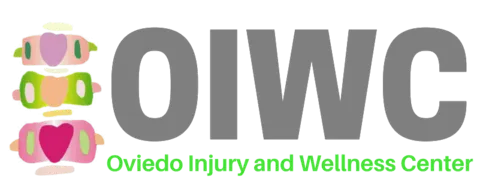
What is the Activator?
An Activator adjustment is a chiropractic technique used by Dr Ressler at Oviedo Injury and Wellness that uses a handheld, spring-loaded instrument to apply force to a joint or vertebrae to help restore movement and reduce pain and inflammation. It is used to restore range of motion to the vertebrae and extremity joints.
How does the Activator Method work?
When you arrive for your appointment, our chiropractor will evaluate your symptoms, perform a physical examination, and determine which of your vertebrae or extremity joints need to be adjusted. The patient will lay face down on the adjusting table and the device is placed against the skin near the affected joint/location where the adjustment is to be performed. The chiropractor applies pressure to the handle of the device which releases the spring. This release causes the spring to push forward and delivering a quick thrust to the joint pushing the vertebrae or joint back into its proper position. When the joint is back into proper position, movement is restored, inflammation is reduced, and pain is relieved. Typically, more force is applied when adjusting your pelvis and lower back. Less force is used when working your smaller joints such as your neck or fingers. The thrust is similar to tapping your knee with a reflex hammer. People often wonder how a simple quick thrust can move the joint back into position. When the muscle around the joint are not guarding, the joint can be easily put back into position. An example is when you stretch, sometimes you get a click when a joint pops back into position. If the patient is guarding against the adjustment (Ex: Like when you get manually adjusted, then the joint is harder to put back in place.) That is why with a manual adjustment you have to use more pressure or force to move the joint back into position.
Why should I choose the Activator over traditional spinal manipulation?
One of the best aspects of chiropractic care is the variety of adjusting techniques that the doctor can use. Some of the more common techniques include Activator Methods, , Cox, Diversified, Gonstead, NUCCA, Torque release and Thompson technique. Chiropractors must choose between manual or instrument-assisted adjustments or a combination of both. If they use instrument-assisted device, Doctors who utilize this method perform adjustments using a handheld device called an Activator Adjusting Instrument. Each approach has it’s own unique pros and cons.
Traditional spinal manipulation is performed with the chiropractor’s hands. During the adjustment, a quick, firm thrust will be used to realign the joint. While this is perfectly safe, the adjusted area is much larger with a traditional adjustment than with an Activator adjustment. The Activator delivers a direct and precise adjustment that does not require any twisting or pulling. Individuals typically find the activator method less physically and mentally stressful because there are not as many pops or cracks associated with the adjustment, and the speed of the device means that the muscles do not have time to tense against the force. The Activator device is designed to mimic the effects of a manual spinal adjustment but a more precise way of manipulating the spine. Another type of adjustment Dr. Ressler might use is a drop-away table to facilitate the adjustment. This is used for the low back or pelvis if the activator adjustment is not getting results quick enough. With these adjustments, Dr. Ressler will push on your back/pelvis in coordination with a moving part of the table that drops away at the same time the thrust is delivered. This adjustment has no twisting or rotation with it and is very effective for disc type injuries. Dr. Ressler always tries to use the appropriate technique for you that gives you the best results.
So Which Technique Is Better For Me?
When it comes down to it, it usually is simply a matter of preference and your previous experience and response to chiropractic adjustments.
In terms of effectiveness, the consensus of research studies has shown that both approaches (manual or instrument-assisted adjustments or a combination of both) produce the same results in terms of results and recovery for the patient. Both forms of adjusting are very safe. Some of the more common temporary side effects include feeling soreness or tenderness around the areas adjusted.
The choice is up to you. Regardless of the method or technique used, the common purpose of a chiropractic adjustment is to restore proper motion and mechanics to your joints in order to alleviate pain and discomfort as well as improve your body’s ability to function.
Is the Activator FDA approved?
The Activator is FDA approved and is one of the most widely researched chiropractic techniques that shows it to be safe and effective for performing chiropractic adjustments even with individuals that have degenerative joint disease. The Activator adjusting technique also has clinical trials to support its efficacy.
Are there any side effects associated with the Activator method?
There are no side-effects associated with the Activator method of chiropractic adjustment. In fact, it is gentler than the traditional hands-on method of manipulation because there is no extra movement of the joints. The only area that moves is the specific segment that is being adjusted. Most people find the Activator Method of chiropractic adjustment more comfortable than traditional adjustments.



